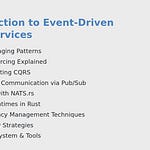Ah, error handling—the unsung hero of API development! Just like a superhero in a comic book who tirelessly saves the day without ever taking the limelight, effective error handling ensures that your API remains robust and resilient. In an age where applications are increasingly interconnected, a well-implemented error handling strategy can mean the difference between a seamless user experience and a frustrating journey filled with cryptic error messages.
So, grab a cup of coffee or tea, and let's dive into the intricate world of error handling. You'll soon discover how to transform those pesky errors into valuable insights that not only enhance your API's performance but also elevate your status as a backend wizard.
Understanding Error Handling: A Primer
At its core, error handling refers to the process of anticipating, detecting, and responding to errors that occur during the execution of your code. In the realm of APIs, this means that when something goes wrong—not if, but when—you must have a plan in place to gracefully manage that misstep.
Errors can arise from various sources: network issues, incorrect input from users, or even the dreaded server meltdown. The objective is to provide meaningful feedback to both the client and the developer, ultimately allowing for smoother user experiences and easier debugging.
Common types of errors you might encounter include:
Client Errors (4xx): These occur when the client sends an incorrect request, such as a malformed URL or missing authentication.
Server Errors (5xx): These indicate that something went wrong on the server side, like a timeout or an unexpected condition.
Network Errors: These can arise due to connectivity issues, DNS failures, etc.
The Anatomy of Effective Error Handling
To build a robust error handling mechanism, let's break it down into a few essential components:
Error Detection: This involves identifying when an error occurs. In Python, this is typically done through exception handling using try-except blocks.
Error Logging: When an error occurs, it's crucial to log it. This helps you keep track of the issues that arise and aids in debugging. Use logging libraries to capture error details, including timestamps, error messages, and stack traces.
Error Response: Crafting a user-friendly error response is vital. Instead of returning a generic "something went wrong" message, provide a clear and concise explanation of the error, along with possible next steps for the user.
Fallback Strategies: Sometimes, the best way to handle an error is to gracefully degrade functionality. Implementing fallback strategies can help maintain a level of service even when problems occur.
Monitoring and Alerts: Use monitoring tools to keep an eye on your API’s performance and error rates. Set up alerts to be notified of critical errors in real-time.
Example: Error Handling in Python
Let’s take a look at a simple example of effective error handling in Python using Flask, a popular web framework for building APIs. Here’s how you can manage client and server errors:
from flask import Flask, jsonify, request
app = Flask(__name__)
@app.route('/api/data', methods=['GET'])
def get_data():
try:
# Simulating a potential error
param = request.args.get('id')
if not param:
raise ValueError("Missing 'id' parameter")
# Simulate data retrieval
data = {"id": param, "value": "some_value"}
return jsonify(data), 200
except ValueError as ve:
return jsonify({"error": str(ve)}), 400 # Client error
except Exception as e:
return jsonify({"error": "Internal Server Error"}), 500 # Server error
if __name__ == '__main__':
app.run(debug=True)
In this example, we have a simple API endpoint that takes an id parameter. If the parameter is missing, a ValueError is raised, and a 400 Bad Request response is returned. Any unforeseen errors are caught in a generic exception handler, which returns a 500 Internal Server Error response.
Third-Party Libraries and Services for Error Handling
To supercharge your error handling strategies, consider leveraging some of the following libraries and services:
Sentry: A real-time error tracking tool that helps you monitor and fix crashes in your applications.
Bugsnag: Offers error monitoring and reporting services, letting you diagnose errors quickly.
Loggly: A cloud-based log management service that assists in logging and monitoring your applications.
Conclusion: Embracing the Error
In the fast-paced world of API development, errors are inevitable; but with effective error handling, you can turn potential disasters into manageable issues. By anticipating errors, logging them thoughtfully, and responding efficiently, you not only enhance user experience but also take your backend skills to the next level.
So, the next time you encounter an error, don’t panic—embrace it! It’s just another opportunity to learn and grow as a developer.
Thank you for joining me on this journey through the world of error handling. If you found this article insightful, make sure to come back and follow “The Backend Developers” for more tips, tricks, and tales from the backend universe. Until next time, keep coding and keep smiling!










